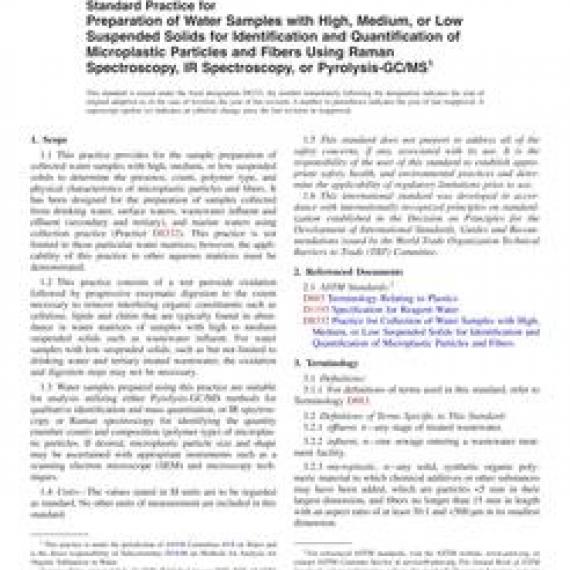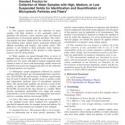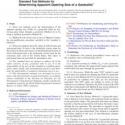No products
ASTM D8333-20
ASTM D8333-20 Standard Practice for Preparation of Water Samples with High, Medium, or Low Suspended Solids for Identification and Quantification of Microplastic Particles and Fibers Using Raman Spectroscopy, IR Spectroscopy, or Pyrolysis-GC/MS
standard by ASTM International, 07/15/2020
Full Description
1.1This practice provides for the sample preparation of collected water samples with high, medium, or low suspended solids to determine the presence, count, polymer type, and physical characteristics of microplastic particles and fibers. It has been designed for the preparation of samples collected from drinking water, surface waters, wastewater influent and effluent (secondary and tertiary), and marine waters using collection practice (Practice D8332). This practice is not limited to these particular water matrices; however, the applicability of this practice to other aqueous matrices must be demonstrated.
1.2This practice consists of a wet peroxide oxidation followed by progressive enzymatic digestion to the extent necessary to remove interfering organic constituents such as cellulose, lipids and chitin that are typically found in abundance in water matrices of samples with high to medium suspended solids such as wastewater influent. For water samples with low suspended solids, such as but not limited to drinking water and tertiary treated wastewater, the oxidation and digestion steps may not be necessary.
1.3Water samples prepared using this practice are suitable for analysis utilizing either Pyrolysis-GC/MS methods for qualitative identification and mass quantitation, or IR spectroscopy or Raman spectroscopy for identifying the quantity (number count) and composition (polymer type) of microplastic particles. If desired, microplastic particle size and shape may be ascertained with appropriate instruments such as a scanning electron microscope (SEM) and microscopy techniques.
1.4Units-The values stated in SI units are to be regarded as standard. No other units of measurement are included in this standard.
1.5This standard does not purport to address all of the safety concerns, if any, associated with its use. It is the responsibility of the user of this standard to establish appropriate safety, health, and environmental practices and determine the applicability of regulatory limitations prior to use.
1.6This international standard was developed in accordance with internationally recognized principles on standardization established in the Decision on Principles for the Development of International Standards, Guides and Recommendations issued by the World Trade Organization Technical Barriers to Trade (TBT) Committee.


































